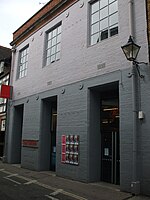Siege of Oxford

The siege of Oxford comprised the English Civil War military campaigns waged to besiege the Royalist controlled city of Oxford, involving three short engagements over twenty-five months, which ended with a Parliamentarian victory in June 1646. The first engagement was in May 1644, during which King Charles I escaped, thus preventing a formal siege. The second, in May 1645, had barely started when Sir Thomas Fairfax was given orders to stop and pursue the King to Naseby instead. The last siege began in May 1646 and was a formal siege of two months; but the war was obviously over and negotiation, rather than fighting, took precedence. Being careful not to inflict too much damage on the city, Fairfax even sent in food to the King's second son, James, and was happy to conclude the siege with an honourable agreement before any further escalation occurred.
Excerpt from the Wikipedia article Siege of Oxford (License: CC BY-SA 3.0, Authors, Images).Siege of Oxford
Roger Bacon Lane, Oxford City Centre
Geographical coordinates (GPS) Address Nearby Places Show on map
Geographical coordinates (GPS)
| Latitude | Longitude |
|---|---|
| N 51.75 ° | E -1.26 ° |
Address
The Cabin
Roger Bacon Lane 2
OX1 1QE Oxford, City Centre
England, United Kingdom
Open on Google Maps








